Want more leads and customers from Instagram? Have you considered Instagram Stories ads?
To explore what you need to know about Instagram Stories ads, I interview Susan Wenograd on the Social Media Marketing Podcast.
Susan is a Facebook ads expert and the chief marketing officer at Aimclear, a marketing agency focused on paid search and paid social.
Susan explains why marketers should consider Instagram Stories ads and shares the best practices for creating good Instagram story ads.
Listen to the Podcast Now
This article is sourced from the Social Media Marketing Podcast, a top marketing podcast. Listen or subscribe below.
Where to subscribe: Apple Podcasts | Spotify | YouTube Music | YouTube | Amazon Music | RSS
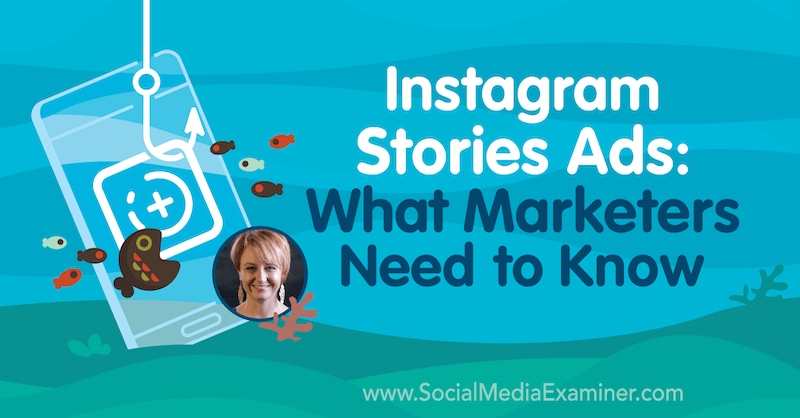
Why Marketers Should Consider Instagram Stories Ads
Instagram Stories is the fastest-growing ad placement on Instagram in both daily user interactions and ad inventory growth. There's a lot of organic content on Instagram Stories but not as many advertisements. Thus, for the first time in a while, there's some available ad inventory that hasn't reached fever-pitch yet.
You tend to see lower costs on story ads and when done right, story ads also perform much better than feed ads. The placement offers a double benefit: There's more inventory than demand and the inventory works very well.
In August or September 2019, Instagram beta-tested showing more than one ad back-to-back, which is a sign that they want to open up more inventory for this placement. Ads don't play back to back every time and most users don't notice they're seeing more than one ad at a time. This speaks well of the experience; it doesn't feel overly interruptive to users.
Because an Instagram story takes over the entire screen, it's not competing with anything above or below it. It's an immersive experience.
When story ads are done properly, they blend right in with the organic content and don't feel as obvious or jarring as other types of ads.
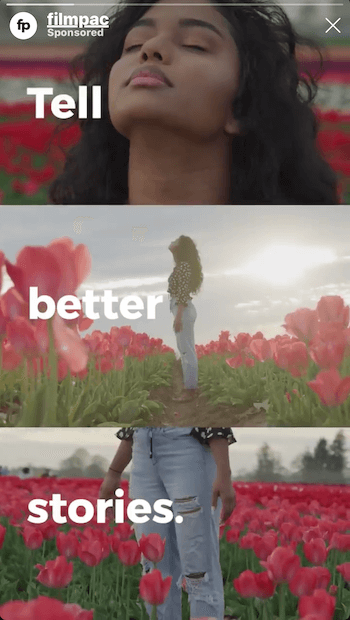
To visualize this, when you're scrolling through the Instagram feed, it's often very obvious when something's an ad. Users often scroll right past feed ads because they recognize the ad for what it is right away. When you're watching a stream of stories, though, story ads are sandwiched between organic stories and it takes you a few seconds to figure out what you're looking at.
Get World-Class Marketing Training — All Year Long!
Are you facing doubt, uncertainty, or overwhelm? The Social Media Marketing Society can help.
Each month, you’ll receive training from trusted marketing experts, covering everything from AI to organic social marketing. When you join, you’ll also get immediate access to:
- A library of 100+ marketing trainings
- A community of like-minded marketers
- Monthly online community meetups
- Relevant news and trends updates
That's where the advantage is for marketers.
What's Different About Instagram Stories Ads vs. Feed Ads?
The experience of stories and stories ads is full-screen with no distractions, which is very different from the feed experience; you have a more captive audience.
Aspect Ratio and Creative
Most social media videos are 16 x 9 landscape videos. On Stories, the media stretches out to fill the entire screen and the orientation is 9 x 16 vertical rather than 16 x 9 horizontal/landscape.
This full-screen experience of Instagram story ads requires a different approach to the creative. Marketers shouldn't simply click Instagram Stories as an additional placement for their ads; the placement doesn't translate feed creative very well so story ads should be specifically designed for the Instagram Stories placement.
Consider, for instance, the implications of running your feed ad as a story. How will the image translate in a full-screen experience? If you cut off the sides of the image, what will it look like? How are you going to integrate text with it?
In a feed ad, you usually have two separate elements: A visual and text the viewer can expand to read more fully. Stories ads offer limited real estate that doesn't include that body copy; the visual and copy have to operate as a cohesive creative unit.
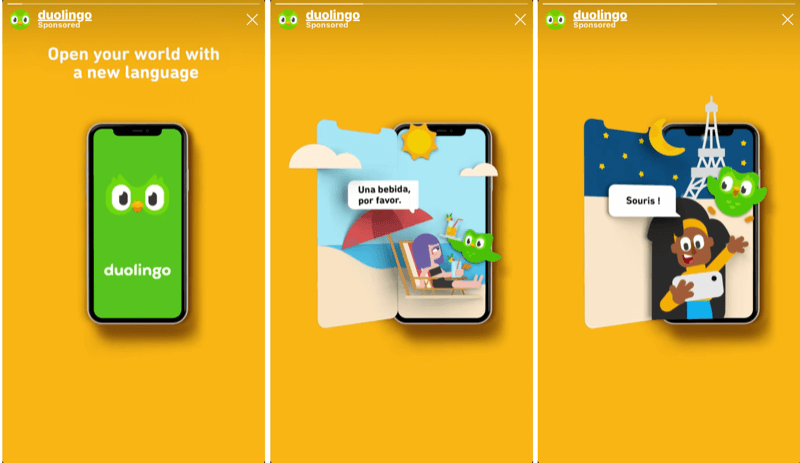
Message Length
Story ads can be as long as 15 seconds which is longer than the average 8-second watch time for an ad in the feed—and Susan has noted that people are watching story videos pretty much the whole 15 seconds, indicating it's a more engaging placement. Watch time may lower as more ads are served in Stories, but for right now, people seem fairly engaged compared to what we see with ads served in the feed.
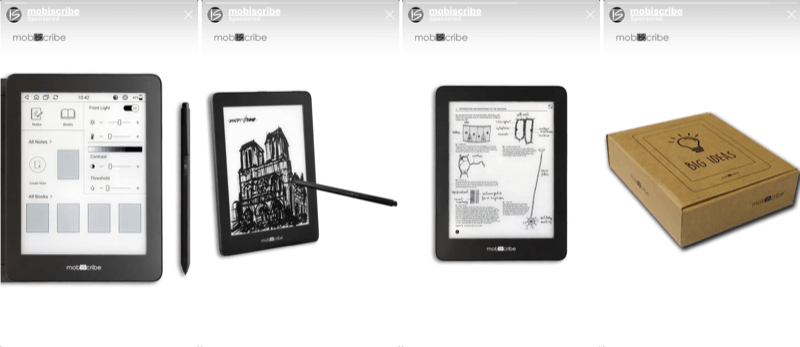
Audio and Subtitles
Another advantage for story ads is that Stories' audio is typically unmuted by default which means your ad will play with its audio unmuted. That's not necessarily the case in the Instagram feed. If someone's muted a video in the feed, any video ads will also be muted unless the user clicks to listen.
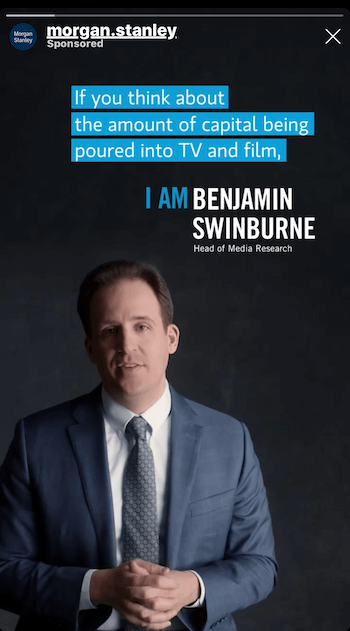
Because stories' sound is usually on by default, you don't have to use that creative real estate for subtitles. That means, though, that the things people say and the music in your ad matters a lot more; it's more likely to be heard.
Call to Action
In a feed ad, the clickable call to action is shown as a button near the bottom of the ad; users tap or click the button to learn more, buy, etc. In an Instagram story, the call to action is to swipe up. The swipe-up feature essentially acts as the URL click-through button and is included by default, whether you add it into your ad creative or not.
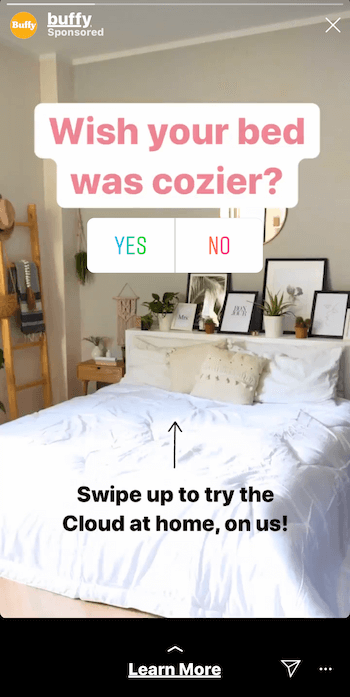
This is valuable because, to use the Swipe Up feature in an organic Instagram story, your account needs a minimum of 10,000 followers. Creating an Instagram Stories ad bypasses that threshold.
A Key Recommendation for Instagram Story Ads Set-Up
While Instagram story ads can use the same audience targeting options as any ad served via Facebook Ads Manager, retargeting for Instagram isn't as robust as it could be. Instagram Stories isn't a stand alone asset placement, yet. Retargeting to Instagram will include people who have interacted with your feed posts and your stories, combined.
Susan says Facebook Campaign Budget Optimization (CBO) makes this problematic because budget isn't always reliably allocated to the stories placement; it's often pushed to the feed ads. To get around this, Susan puts her stories ads in their own ad set. Then, when she's identified the creative that's working, she can scale its success and performance.
Creating an Instagram Stories Ad
Story ads also present in the same way as organic stories; the progress bars at the top of the ad give the viewer an idea of how many different segments the ad will go through. You can create one long, 15-second story or string a couple of videos together so there are multiple segments that will play within 15 seconds. Note that Instagram Story ads are currently limited to 15 seconds; you can't string three 15-second videos together to make a 45-second video ad. The upshot of this type of ad is that people can swipe through to skip some parts of your story ad without completely leaving it.
It's a challenge to get your message across in only 8 to 15 seconds. You have to figure out how to condense your selling point into maybe two lines of copy because no one wants to read a paragraph during a 15-second experience. As a marketer, you're forced to be really honest with yourself: If people are going to scan only two or three points, what are those points going to be? How will you create something visually arresting so people want to stop and see it.
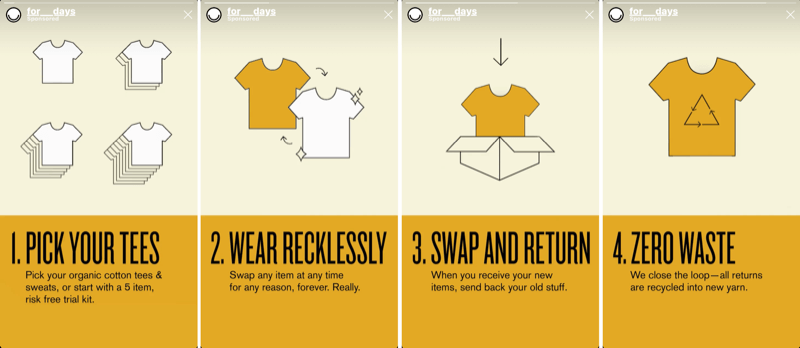
Creating Instagram Stories Ads With Templates in Facebook Ads Manager
Instagram story ad templates rolled out in Ad Manager a few months ago and Susan says they're surprisingly good.
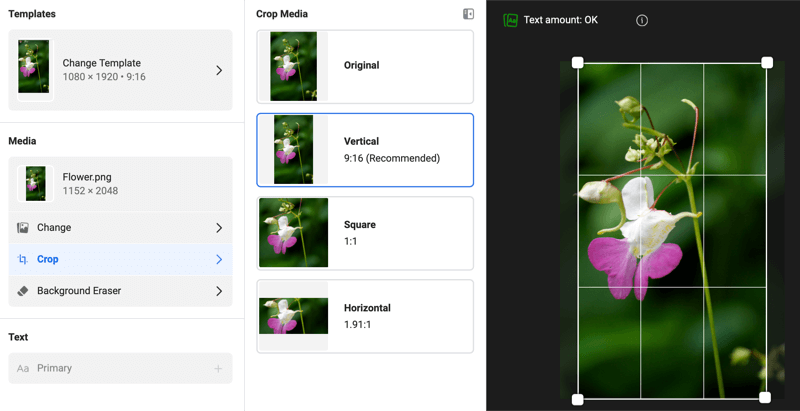
If you run ads that bundle the Instagram Stories Ads placement with other placements, there's a drop-down menu that lets you specify different creative for specific placements; that's where those templates will show up as an option.
The main challenge is that you can't use the templates if you create a separate ad set that run only via the Instagram story ads placement.
Because Susan wants to more control over her Instagram Stories Ads, she's uses a process for creating an organic story and then turning it into an ad: Create the story ad in the app, save it, and email the file to yourself as a video file to upload to Ads Manager.
Creating Instagram Stories Ads With Hyperlapse and Boomerang
There are two Instagram-owned apps Susan recommends for creating interesting and eye-catching stories ads:

Discover Proven Marketing Strategies and Tips
Want to go even deeper with your marketing? Check out the Social Media Marketing Podcast! Publishing weekly since 2012, the Social Media Marketing Podcast helps you navigate the constantly changing marketing jungle, with expert interviews from marketing pros.
But don’t let the name fool you. This show is about a lot more than just social media marketing. With over 600 episodes and millions of downloads each year, this show has been a trusted source for marketers for well over a decade.
- Hyperlapse lets you record something in real time and toggle the speed bar back and forth to create a time-lapse video by speeding the footage up.
- Boomerang lets you take a quick 5-second video that plays backward and forward on a loop; much like a GIF.
There are many apps you can use to create similar video, but Hyperlapse and Boomerang are owned by Instagram, so they work really well on the platform.
After you create a Hyperlapse or Boomerang file, email it to yourself and use that file to create a story on your phone. This process gives you access to all of the same text options, static stickers, and other features you'd normally get if you made a regular story.
Remember, the bottom portion of the video or image is going to get covered by the Swipe Up call to action; the little blue line at the bottom of the screen denotes that area when you creating an organic story. It doesn't really matter if there's an image or video below that line but you do want to make sure there's nothing important showing or playing below that line.
At the point when you would normally post the story to your story feed or send it to someone, download it to your phone as a video or a still image. Then upload that video file as the creative for your story ad; the story never actually shows on your brand's Instagram.
Adding Interactive Polls to Instagram Story Ads
When you make your story ad creative, you can tick a box that says, “I want to run an interactive poll”. Enter the text you want to display and Ads Manager will automatically overlay it onto your creative for you.
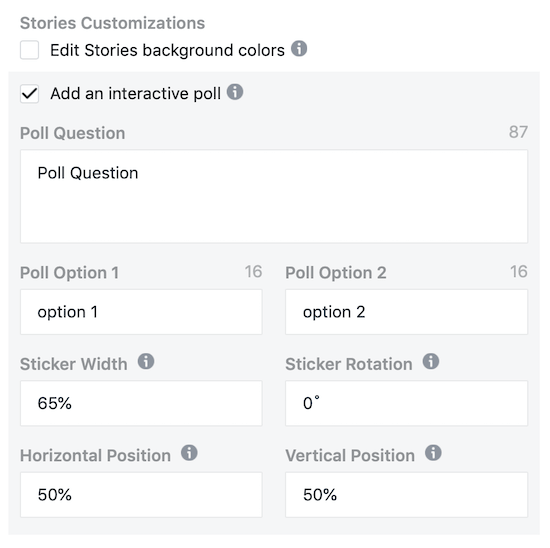
To include an interactive poll in your ad, you'll need to leave enough space to account for the insertion of the poll overlay during the ad creation process. That means leaving enough strategic space for the overlay.
Listen to the show to hear why Susan prefers creating ads with native Instagram features rather than with third-party tools.
Using Hashtags, Tags, and Other Text in Instagram Story Ads
Ads Manager prioritizes the visual in an ad. If your ad includes a video or image that's specifically designed to take up the entire screen, you'll still see a space to add body copy during the ad creation process, but the copy won't show up—because your image has taken up the display space.
You can add body copy/text into your ad—including hashtags and tags—when you're preparing the final ad but you have to cut down the image dimensions. To pair copy with an image, use something like a 1 x 1 image that doesn't take up the entire screen. Then, your copy has room to show in the empty space below the visual.
The available character count in that space will be limited (approximately 25 to 30 characters when paired with a 1 x 1 visual) and your text can be truncated. If you do decide to use the approach for adding copy into your ads, keep a close eye on the ad preview to see how much of your text is actually showing.
It's worthwhile to note that Susan doesn't like to use that space below for text. She feels it's better to compose text organically with the native stories text functionality and crop your image inside Ads Manager.
That said, there are times where cropping a visual can work, depending on what assets you've been given. If you have video that wasn't specifically shot for Stories, sometimes cropping can work in your favor. For example, if the shot is from far away, the cropping gets rid of all of the noise so you can direct the user to focus on what's important. But if you have the option to just use a video that's shot and cropped correctly for that placement, that's always going to be better.
How to Use Images and Video for Successful Instagram Story Ads
There are a few different kinds of creative video that can stop someone's attention in story ads such as the aforementioned Hyperlapse and Boomerang apps. From a cold audience perspective, it's usually best for the creative to fill the full vertical screen because it's so immersive. Typically, Susan sticks with static images in a carousel ad and then use video as a stand-alone.
It often takes a few seconds for users to understand what they're looking at in stories. It starts playing automatically so there's an adjustment of a couple of seconds for people to figure out what they're even looking at. Susan tries to keep that as uninterrupted as possible because if it plays for 3–5 seconds and then switches to the next thing, it's not giving the user enough time to comprehend what they're looking at.
Susan says she's tried everything—videos, music and text, talking heads—and says successful formats in Instagram story ads really depend on the products being sold. If it's visually stunning, then it's less about talking heads and more about the product, and music and maybe overlaying it with some written reviews. If it's more of a commodity product where people know what it is but the differentiating factor is happy users, then she focuses more on talking heads.
Using Instagram Story Ads for Testimonials
Testimonials do well, especially if you cut together a video that rapid-fires through a lot of them. You can run one review the full 15-seconds if you want but Susan says it's not as compelling as flipping through 10 1.5-second shots of people just smiling or giving a thumbs up and holding the product.
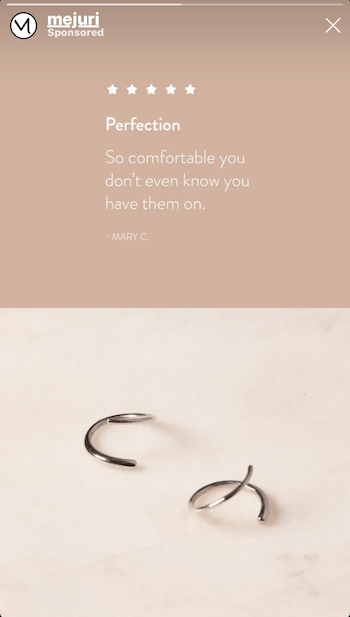
You can flip through those and then just do a text overlay of five stars or call out the things that people loved, and it doesn't have to switch as quickly as the pictures do. That's where taking the time to edit can make a big difference.
Using Polls in Instagram Story Ads for Market Research
Susan has also seen people make really good use of polls. She's seen fashion brands use polls to involve users in the brand decisions that are made. They might show a split-screen of two shirts that they're thinking of making or carrying, and ask their users which one they would buy if they launched tomorrow.
As an advertiser, you can see the results of those surveys. Not only do you have the market research you wanted, but the poll results can also make for an interesting follow-up where you can remarket to anybody that engaged with your ads once the winning shirt is up for purchase. It's pretty compelling to say, “You guys voted and we listened. Here's the winning shirt, and it's now for sale.”
Promoting IGTV Videos via Instagram Story Ads
Let's say you wanted to promote one of your IGTV videos, which happens to also be vertical. You could create a story ad and then have the swipe up go to the entire IGTV video, as long as you specify that external URL. You can log in on the desktop, click on your profile, click on IGTV, get the URL for the video, and use it as your Swipe Up call-to-action link in the story ad.
There's something to getting people to watch the longer-form video already on the platform. Susan isn't sure whether you can target people who watch IGTV as a placement yet. She suspects that if it's not an option yet, it will be soon; especially since they've recently started doing that for Facebook Watch. Overall, Susan predicts that IGTV and Stories are going to be the next big places for Facebook ad placement.
Repurposing Stories for Instagram Story Ads
Note that you can only turn a story you've already published into an ad if you download it first. The challenge is that organic stories go away after 24 hours so it's a good idea to save key stories as a highlight. Then you can download the story as a separate video file and upload it to work on. Remember, the download will process as an image so tagged content and other functions won't work anymore and the links won't be live.
Key Takeaways From This Episode:
- Find out more about Susan on her website.
- Visit Aimclear.
- Follow Susan on Twitter.
- Follow Aimclear on Twitter.
- Explore Instagram's Hyperlapse and Boomerang apps.
- Check out Social Media Marketing World 2020.
- Watch exclusive content and original videos from Social Media Examiner on YouTube.
- Watch our weekly Social Media Marketing Talk Show on Fridays at 10 AM Pacific on Crowdcast.
Help Us Spread the Word! Please let your Twitter followers know about this podcast. Simply click here now to post a tweet.
If you enjoyed this episode of the Social Media Marketing podcast, please head over to iTunes, leave a rating, write a review, and subscribe. And if you listen on Stitcher, please click here to rate and review this show.
What do you think? Do you run Instagram Stories ads for your business? Share your thoughts in the comments below.
Attention Agency Owners, Brand Marketers, and Consultants

Introducing the Marketing Agency Show–our newest podcast designed to explore the struggles of agency marketers.
Join show host and agency owner, Brooke Sellas, as she interviews agency marketers and digs deep into their biggest challenges. Explore topics like navigating rough economic times, leveraging AI, service diversification, client acquisition, and much more.
Just pull up your favorite podcast app, search for Marketing Agency Show and start listening. Or click the button below for more information.

